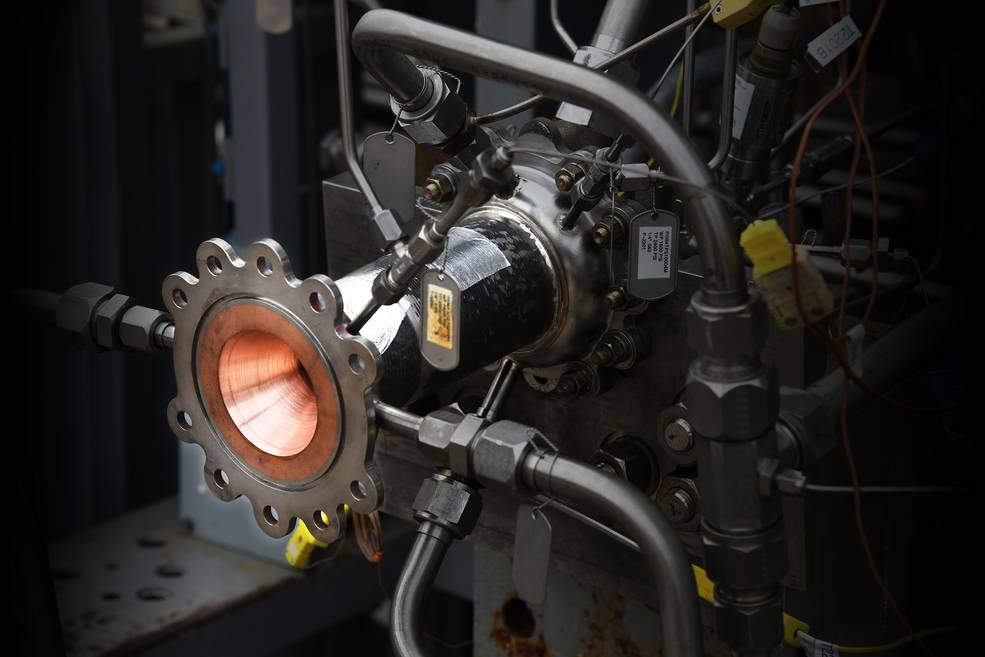
NASA and rocket manufacturer Virgin Orbit have partnered to 3D print a combustion chamber that could be used in rockets carrying small satellites to space.
The companies aimed to create a 3D printed copper alloy combustion chamber with multiple materials more quickly than conventional methods.
‘Traditionally, it takes many months to manufacture, test and deliver a conventional combustion chamber,’ said NASA senior engineer Paul Gradl. ‘We can reduce that time considerably. Additive manufacturing is primed to augment and enhance traditional processes. It provides new design and performance opportunities and yields a highly durable piece of hardware.’
The chamber was printed using NASA additive copper alloy, GRCop-84 with a second bimetallic super-alloy layer which was applied using Virgin Orbit’s hybrid additive/subtractive machine.
In tests using high-pressure liquid oxygen/kerosene propellants, the chamber delivered more than 2,000 pounds of thrust successfully in nearly two-dozen, 60-second test firings, the companies said.
‘The combination of multiple optimized materials and additive manufacturing technologies we’ve employed represents a significant advancement from the compromises typically made in the production of 3D printed rocket engine combustion chambers,’ said Kevin Zagorski, propulsion advanced manufacturing manager at Virgin Orbit.
This story uses material from NASA, with editorial changes made by Materials Today. The views expressed in this article do not necessarily represent those of Elsevier.






